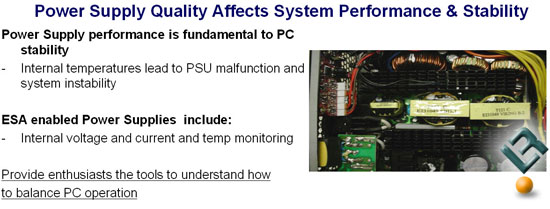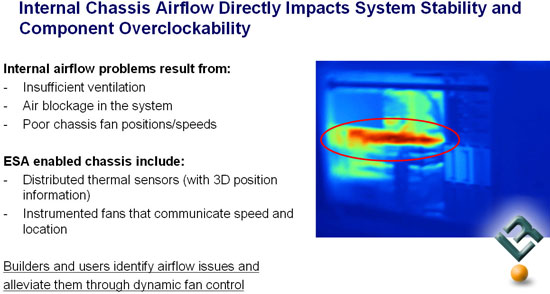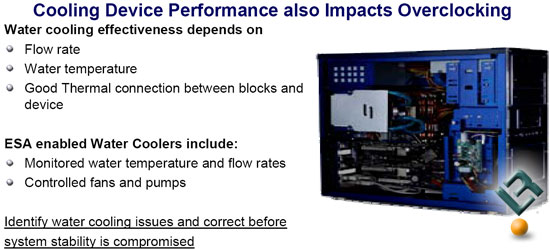NVIDIA Announces Enthusiast System Architecture
By
Power Supply, Chassis and CPU Support Defined
ESA-certified power supplies will support temperature, current, and voltage monitoring. ESA makes it possible for enthusiasts to supervise and tune characteristics that are not otherwise accessible allowing better performance. Additionally, ESA provides a diagnostics tool to help identify the cause of system malfunction and can inevitably save the end-user and manufacturer time and money. Power supply builders can even let end users monitor the total wattage used and things like the temperature of the coil pack.

An ESA certified power supply will:
-
Adjust delivered power based on host specified operating point. This will allow for quieter operation when max power output is not demanded
-
Adjust voltage levels of output. Useful to fine tune overclocking boards with limited regulation capabilities
-
Report power supply operating conditions and status. Useful to determine how close to rated maximums the power supply is operating. Also runtime voltage drop can be observed to understand system stability issues.
-
Ability to report internal temperature which is an important factor to power supply stability and performance. This ultimately has an impact on overall system performance and operation.

An ESA enabled chassis will take advantage of the new control plane to:
- Manipulate LEDs and LCDs to reflect system status
- Communicate fan and thermal sensor status for devices controlled by the chassis. This includes 3D positions of thermal and acoustic zones within the chassis using three dimensions of position data.

An ESA enabled water cooled device will take advantage of the new control plane to:
- Adjust pump speed based on system monitored device temperatures (CPU, GPU, MCP, other)
- Adjust fan speeds based on monitored device temperatures
- Report flow rates, water levels and temperatures to give early warnings of leaks or thermal problems.

Comments are closed.